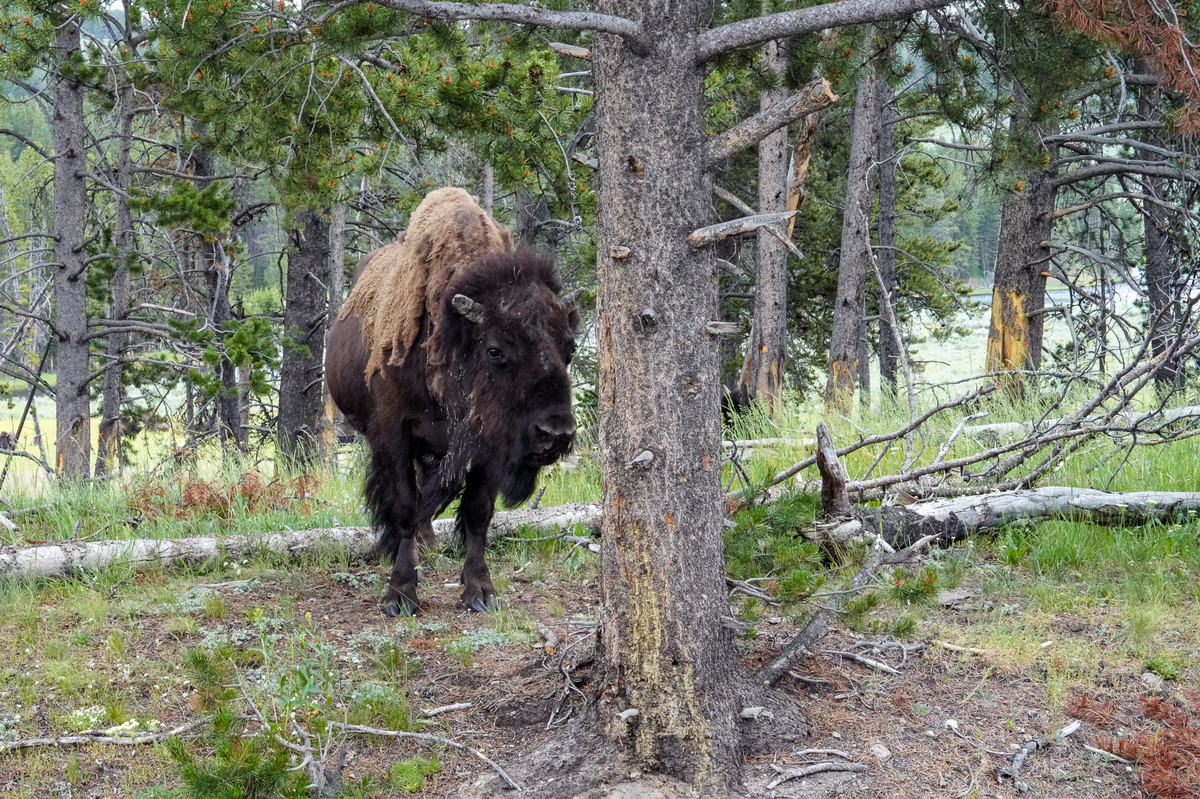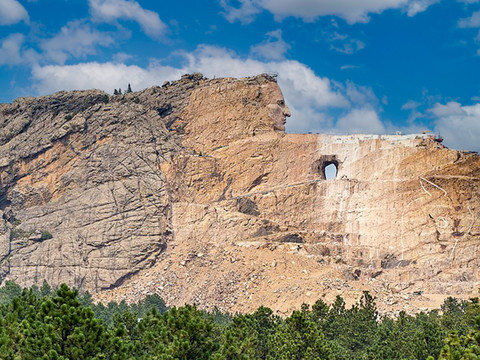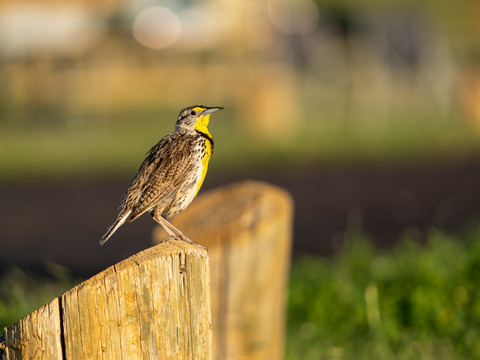Who knows South Dakota? The US state in the Midwest, which is rather unknown to us, attracts visitors with its wide prairies, magnificent natural wonders such as the hilly Black Hills and the barren beauty of the Badlands and their impressive wildlife or the Wind Cave National Park with its fascinating cave systems. South Dakota is also the ideal destination for those interested in the history and culture of the Native Americans and who want to experience the real Wild West feeling.
From the vast prairies with waist-high grass in the east, over the Missouri River and countless ranches in the center, to the western part with the Black Hills and Badlands, South Dakota knows how to score scenically. Also the huge monuments Mount Rushmore and Crazy Horse Memorial give South Dakota a face in the truest sense of the word. The omnipresent spirit of the Native Americans hovers over everything. The state is named after the Lakota and Dakota tribes of Sioux Indians, who had one of their settlements here. So it is not surprising that South Dakota is still home to many Indian reservations. To travel through South Dakota, it takes a little more effort than you as an American traveler might know from other states in the USA. South Dakota is not only located in the northern part of the USA, far away from the usual tourist destinations in the west of America, but there are also no direct flights from Europe to the state. I therefore recommend to combine South Dakota either with visits to other states - like Montana, Wyoming or Colorado. Or plan a longer drive if your arrival airport is Chicago, Denver or Kansas City. Whichever route you choose, South Dakota is worth every extra mile!
Begin your journey in southeast Sioux Falls. South Dakota's largest city charms with parks, galleries and museums. In the historic downtown, around Phillips Avenue, you'll find the "Sculpture Walk," an ever-growing collection of more than 60 sculptures. The absolute highlight in Sioux Falls are the waterfalls in the heart of Falls Park. Over several steps the Big Sioux River rushes over pink quartzite rock. The impressive falls can be observed from various vantage points.
Further west in central South Dakota, endless grasslands and rugged canyons beckon - welcome to Badlands National Park. Even the Native Americans of South Dakota called it bad land: the Badlands. Dry heat, barren soils and unrelenting winds have always made life in the Badlands arduous. After all, over many millions of years, wind, rain, and heat created a natural work of art by contributing to erosion. The layers of solidified clay, sand, shale and volcanic ash in shades of brown, gray, yellow and black make the Badlands one of the most beautiful national parks in the United States today. To experience the rugged beauty of the Badlands National Park, a scenic road about 50 km long leads to many worthwhile lookouts and smaller hiking trails.
Not far from the Badlands at the western exit you take a break and treat yourself to a coffee for 5 cents! Yes, you read correctly. The small town of Wall is home to the largest and most curious Drug Store in the USA, a complex of buildings made up of many stores, snack bars and exhibitions - a shopping center with museum character. It all started when the founders had the idea in the 1930s to lure motorists into their store with "Coffee for 5 Cents" and "Free Ice Cubes". Both are still around today.
Before heading to the Black Hills, you can stock up in Rapid City, South Dakota's second largest city. The city is also a great base camp for trips to the Black Hills; in addition to smaller boutique hotels and the usual hotel chains, there are numerous vacation rentals and campgrounds. The city itself doesn't offer much worth seeing. In downtown Rapid City, you can take the "City of Presidents Tour" to see life-size bronze statues of all previous U.S. presidents. Main Street is lined with boutiques, art galleries, restaurants and bars.
Beyond Rapid City, the street climbs steadily. The oppressive summer heat fades. Welcome in the Black Hills, where two great panoramic roads await you: The 27km long Iron Mountain Road is a work of art in itself. It connects Mount Rushmore National Memorial with Custer State Park and takes you through some of the most beautiful scenery in the Black Hills. The road is famous for its "Pigtail Bridges", quasi corkscrew curves with integrated wooden bridges.
The four giant presidential heads on Mount Rushmore at the beginning of Iron Mountain Road are known far beyond the borders of South Dakota and the USA. The basic intention of carving this memorial into the mountains of South Dakota was simple: the memorial was intended to boost tourism in the remote state, even though it took a full 14 years to blast, carve and chisel the nearly 20-meter-high portraits of the four most important presidents in American history into the granite of Mount Rushmore. With the Mount Rushmore National Memorial, the Indians living in South Dakota got a real problem for various reasons. So the Sioux decided to simply carve their own memorial into their own mountain, breaking all size records. Since construction began in 1948, approximately 10 million tons of granite have been removed so far, but to this day the Crazy Horse Memorial remains unfinished. There is currently no end in sight for the more than 70-year-old construction site; experts assume another 100 years until completion.
The second panoramic road - the Needles Highway - is the most popular route in the Black Hills and leads you up to an army of granite rock needles that frame this panoramic road like spearheads. At the highest point, a highlight on this route awaits you in the form of the "Needles Eye Tunnel", which is only a single lane and can only be used by cars at most. A few curves further on, it is worthwhile to take one of the numerous hikes at the picturesque Sylvan Lake. Embedded in the Black Hills in southwestern South Dakota, a very special nature park awaits you. The 28'000ha large Custer State Park offers the second largest bison herd in North America, but also a lot of smaller creatures like the cute prairie dogs as well as countless hiking trails, picturesque swimming lakes and campgrounds. The park is best experienced in your own car on a half-day loop.
South of Custer State Park is another worthwhile national park, most of which is underground. Wind Cave National Park features one of the longest and most complex cave systems in the world. So far, over 225 kilometers of trails have been explored. The largest cave, Wind Cave, is famous for its ceiling, whose honeycomb-like pattern is visually reminiscent of honeycombs. A special feature of Wind Cave is the strong wind that alternately blows in and out of the cave, giving the national park its name. The exchange of wind creates a whistling sound, which is how the cave was discovered in 1881. Because of its maze-like complexity, Wind Cave can only be explored on a guided tour.
For those who have in mind a continuation of the journey towards Wyoming and/or Montana, a stop in Deadwood is recommended. In the second half of the 19th century, the discovery of gold triggered a huge gold rush in much of America, including western South Dakota. People flocked to the Black Hills in search of their personal fortunes. Thus, from a tent camp of gold miners, the town of Deadwood was born; a short time later, it already had 5,000 inhabitants. As befits a true Wild West town, it attracted not only people in search of work, but also horse thieves, cardsharps and criminals, for whom a place without laws and a sheriff was tailor-made. It was the famous gunslinger Wild Bill Hickok who later kept order in Deadwood before he was shot dead in "Saloon No. 10" while playing poker. Today, the Wild West lives on in Deadwood, if "only" for the tourists. In the Deadwood Historic District, you'll find numerous saloons, casinos and souvenir stores along Main Street, as well as the monument to Wild Bill Hickok at the end of Deadwood Street. End the evening at the rustic Deadwood Bar & Grill restaurant and do as the cowboys do and enjoy BBQ ribs and local craft beer. Cheers!

To properly prepare for your trip
How you get there:
nonstop with Edelweiss to Denver
How you get around:
Rental car or camper
How long should I go:
At least 1 week - connect with other U.S. states
Best travel time:
Summer
Highlights:
Badlands National Park, Black Hills with Custer State Park, Sylvan Lake and Mount Rushmore, Wind Cave National Park
Coffee for 5 cents:
www.walldrug.com
More info:
https://www.travelsouthdakota.com
Written by Michael Bachmann
More travel pictures at www.kissed-by-nature.com

















